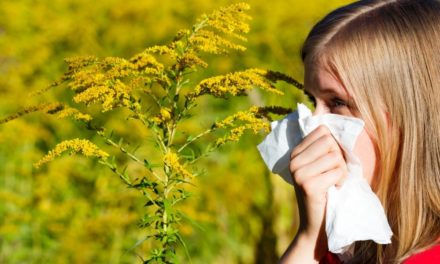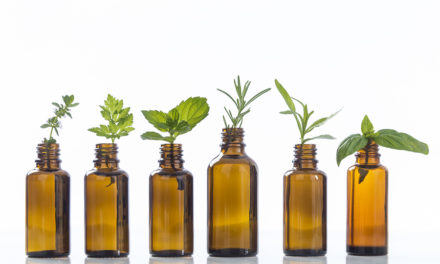 Allergy symptoms are basically due to inflammation, so addressing core health issues, like diet, will improve them. Researchers in Finland found that the type of fats consumed in the diet was related to the tendency to develop allergic symptoms. The results were published in the journal Allergy (2001;56:425-428). Other research, appearing in the journal Thorax (2007;62:677-683) found a relationship between the occurrence of asthma and allergies, and diet. A Mediterranean type of diet, high in fresh produce, is associated with less of an allergic response. Produce is high in flavonoids. Flavonoids are plant antioxidants (found if fresh produce) that have anti-inflammatory and anti-tumor activity. The Journal of Agriculture and Food Chemistry (2006; 54(14): 5203-7) a flavonoid was found to reduce inflammatory substances produced by an allergic reaction.
Allergy symptoms are basically due to inflammation, so addressing core health issues, like diet, will improve them. Researchers in Finland found that the type of fats consumed in the diet was related to the tendency to develop allergic symptoms. The results were published in the journal Allergy (2001;56:425-428). Other research, appearing in the journal Thorax (2007;62:677-683) found a relationship between the occurrence of asthma and allergies, and diet. A Mediterranean type of diet, high in fresh produce, is associated with less of an allergic response. Produce is high in flavonoids. Flavonoids are plant antioxidants (found if fresh produce) that have anti-inflammatory and anti-tumor activity. The Journal of Agriculture and Food Chemistry (2006; 54(14): 5203-7) a flavonoid was found to reduce inflammatory substances produced by an allergic reaction.
In general, taking omega-3 fatty acids is beneficial. Research that appeared in the Journal of Allergy and Clinical Immunology (December, 2003;112(6):1178-84) found that pregnant women who took omega-3 fatty acids were less likely to have babies with allergies than women who did not take the supplement.
Even exercise plays a role. A study, published in Allergy (Vol. 61, No. 11, November 2006: 1310-1315) looked at exercise and activity levels in 1,700 German children over a period of 12 years. At the start of the study, 6% of the children were completely sedentary. At the end of the 12 years, the sedentary children were 50% more likely to develop hay fever.
Various herbs have been found to be beneficial:
Fritillaria thunbergii: (Fritillaria) is an antitussive herb and is a potent cough suppressant. It has a broncho-dilation effect and inhibits mucosal secretions. Fritillaria’s traditional use is for relief of coughing and dyspnea (The Pharmacology of Chinese Herbs, pg 275-6). Fritillaria tends to act in a manner that is similar to dexamethasone, which is used to treat nasal allergy and inflammation.
Solidago virgaurea supplies flavonoids, saponins and phenol glycosides. S. virgaurea is primarily used to promote the loss of water (aquaretic agent) from the body.
Scutellaria baicalensis (Baikal Scullcap) possesses anti-inflammatory, anti-bacterial, and anti-allergic properties
Euphrasia officinalis (Eyebright) – The German Commission E Monographs lists uses of Eyebright which include inflamed eyes, coughs, colds and catarrh (inflammation of mucous membrane). It is useful if an allergic response is the basis for sinusitis (Clinical Botanical Medicine, pg 209).
Morus alba (White Mulberry) In Chinese Medicine, M. alba is used to tonify the blood and enrich the yin (Chinese Herbal Medicines Materia Medica, pg 334-5). It is used as a tonic and as an expectorant for asthma, bronchitis, cold and cough and dyspepsia.The fruit also contains a significant amount of resveratrol. Interestingly, the leaves happen to be the primary food source for the silkworm.
Platycodon grandiflorum (Chinese bellflower). Traditional uses are to dispel phlegm, to ventilate the lungs, and to relieve sore throat. In traditional Chinese Medicine, it is often used in combination in order to direct the actions of other herbs to the upper body.
Albizia julibrissin (Silk Tree) has sweet, neutral properties and contains saponins and tannins. It is calming, i.e. it “calms the spirit” (Chinese Herbal Medicine Materia Medica, pg 406-7). Considered an “auspicious tree,” it is used as a tonic and anthelmintic or vermifuge (Li Shih-Chen, Chinese Medicinal Herbs, pg 22-3).





